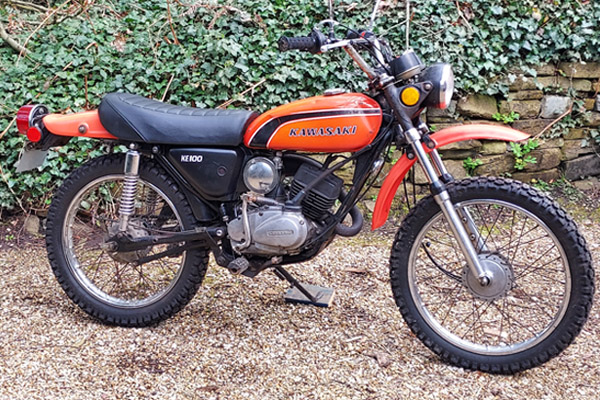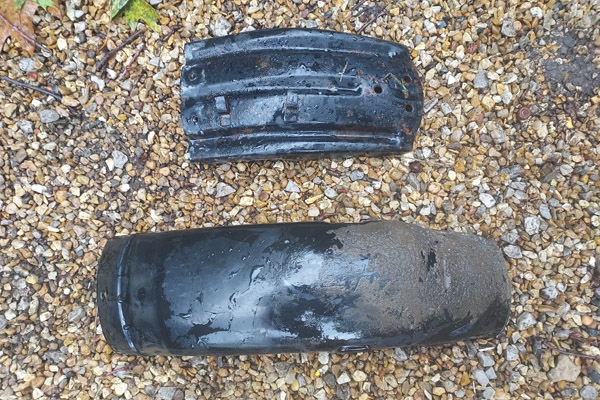A raindrop. It must be winter. Get prepped.
Iain Macauley, automotive journalist, takes us through what we need to do to make sure our classic bikes are prepped for the winter months.
It may have spent decades being ridden through everything the weather could throw at it, and still be in original condition to boot. But admit it: at the first sign of a raindrop you're rushing to get it back in the garage.
There's no logic why - unless we're talking Concours classic bike - because those few drops on the tank are easily wiped off, and aren't going to cause your precious machine to crumble into rust overnight.
Preparation for storing your bike this winter should really have started the day you brought it out of hibernation last winter, and should recommence when you spring it after this one. Because it's not the visible raindrops on the drive that'll do the damage - it's the menace you can't see.
Until you've pulled a classic bike apart you'll never quite appreciate just how much damaging grunge finds its way into nooks and crannies - and festers.

Credit: Kawasaki KE100
Last winter I part-restored (as in leaving its looks, but sorting out the operational bits) a 1973 Kawasaki KE100, a cute and fun mini-trail bike.
On the face of it, a bit dirty: but when it was in pieces on the garage floor the menace was revealed: grime and muck in that confluence of tubes and gubbins where frame meets swinging arm, between bash plate and crankcase, and the other side of not-quite-perfect-fit bits aimed at keeping road filth and field splatter out of areas reserved for parts best kept dry and protected.
Even the jet wash couldn't remove some of the deeper-seated stuff - but when using strong-arm methods, the hardened crud ironically seemed to be doing a bit of an underseal job in some places. But there was also clear evidence of the little machine having been used off-road and left in its shed uncleaned, with flimsier parts rotted or close to failure.
Left for the winter in such a state, it's likely major surgery would have been needed come awakening the following year.
The UK's variously mild and damp winters are bike killers, even if stored in seemingly enclosed spaces, sheds and garages.
To make sure yours comes through the dark and dank months, first take a trip to Asda or Tesco, the reason for which we'll come to shortly.
You're machine needs to go into winter storage clean and dry. Pick one of those cool, crisp days and get stuck in. A proper sponging, jetwash if you have it, and then properly dried. Autumn sun and a bit of a breeze can generally do most of the drying, but don't be afraid to sneak the wife's or mum's hairdryer out and chase that moisture out of the crannies.
But that's where it starts rather than finishes.

Next, lubricate the parts that need it: oil or grease cables, lever mounts, catches, and chain. Overdoing it is fine: it consolidates the protection, and you can wipe it off next year.
On the subject of wiping it off, lightly spray areas susceptible to corrosion or aluminium fluffing with WD40 or similar.
Now there's great debate over whether best to almost drain or completely fill fuel tanks and systems: modern fuels have higher quantities of chemicals such as ethanol (10% in "E10") which are likely to promote rust inside a metal tank, and can damage rubber and plastic components of older carburettors.
Personally, I run my bikes with the fuel turned off until the engine stops so emptying the carb float bowls, and removing the risk of fuel turning to gunge or jamming the floats. I run all my bikes on super-unleaded ("E5"), which is less likely to harm during storage and better for them in use, and leave a small amount in the tank (with an appropriate oil mix for my two-stroke bikes). Then while they're stored, I simply go move them about or rock them on their stands every now and again so fuel sloshes around the tank. The fumes will help prevent corrosion in the tank - and any up and down movement of the forks will also help deter fork seal failure into the bargain.

Tyres: make sure pressures are maintained, and, if practical, move your bike's position every now and then so the weight isn't always on the same spot. Better still, use its centre stand if it has one, and I'll also deploy a variety of Heath Robinson methods to lift the front wheel clear of the ground. I also have a couple of moto-x bike lifts to raise my off-roaders off the floor.
Some bikes can also suffer from clutch plates sticking together during periods of inactivity. My 1972 Yamaha DT250 has that sort of sulk after just a few days laid up, regardless of the quality of oil in its motor. But my 1974 Yamaha XS500, which I know was asleep for at least 18 months, is completely impervious to clutch stickiness. Nevertheless, go give that lever a few pulls during storage, but be prepared to have to drain and replace oil, and run your bike up to temperature before trying to engage gear for the first time after a winter stashed away.
Here's the bit where Asda and Tesco come into play: bear with me.
I've invested in some dry-storage bags for my bikes. They're motorcycle-sized (and come in various sizes) plastic bags. You lay one out, roll your bike on to it, and, admittedly, after a bit of combat (but worth it), pull it up over your bike and zip it closed. Most have some kind of damp-expunging chemical coating on the inside, but I also buy a box of dehumidifiers from my local supermarket's cleaning section - usually less than £2 each - and place one of those in as well.
That the dehumidifier can fill up a couple of times during storage says that there's still some moisture lurking around even with the bag sealed.
In truth, most bikes are pretty resilient, but there's always the unexpected.
Bugs and rodents find ways into bike innards - behind panels, in air filter boxes, under tanks, even in exhausts - so it's worth considering deploying whatever tactics suit your attitude towards them.
Wasps woken early from hibernation can be a bit narky, while our furry friends can often find electrical cables strangely appetising...

COMMENT